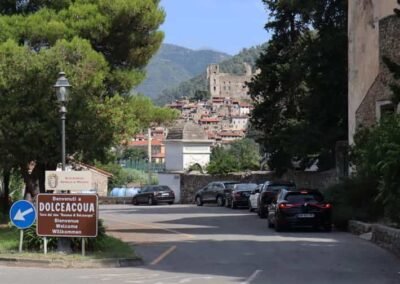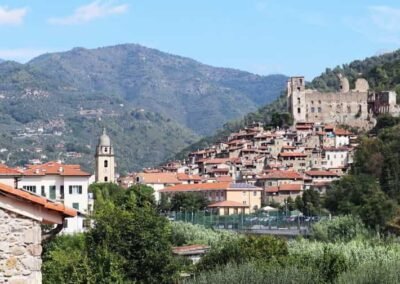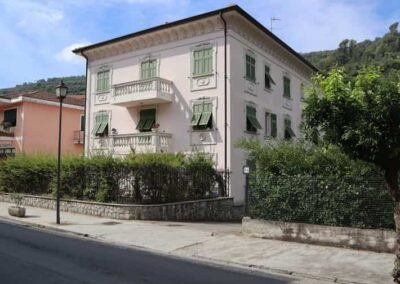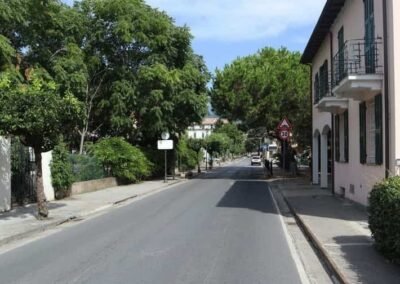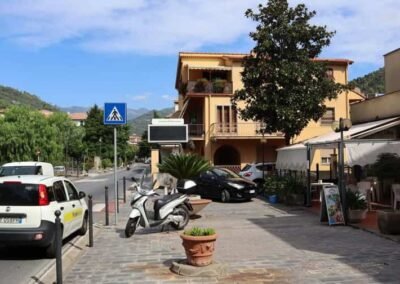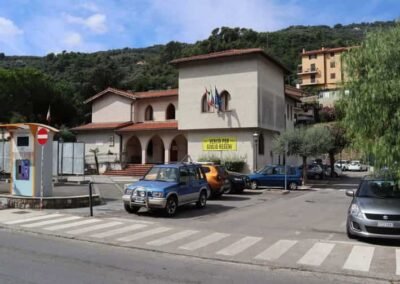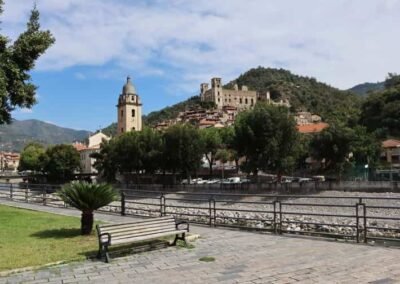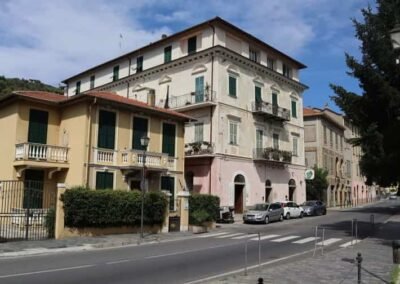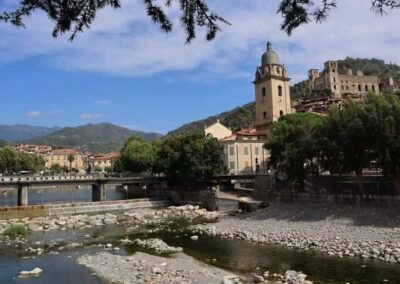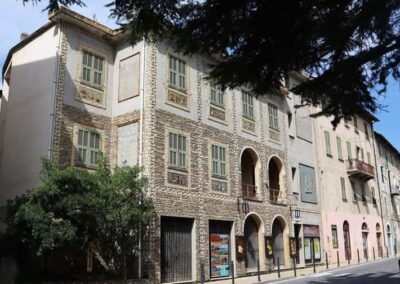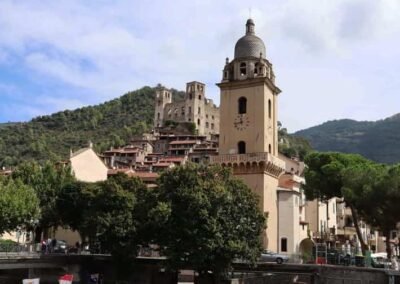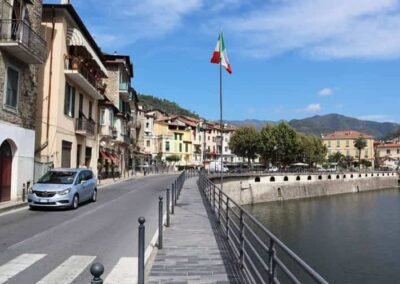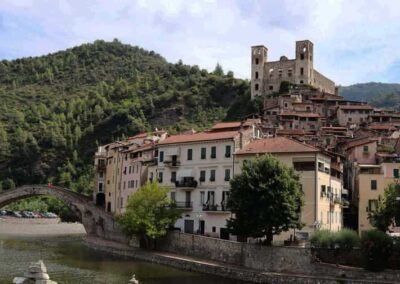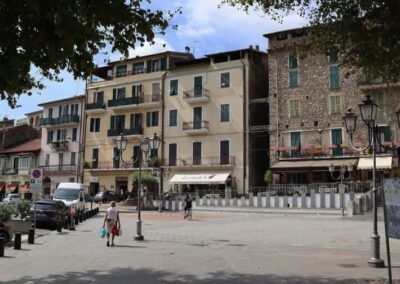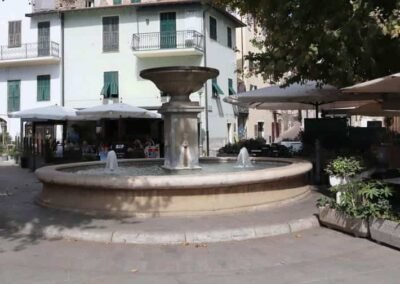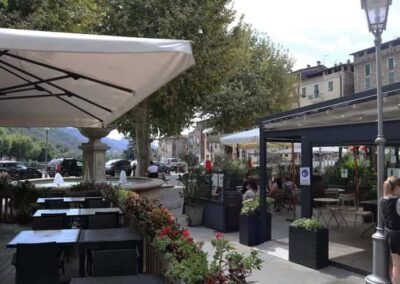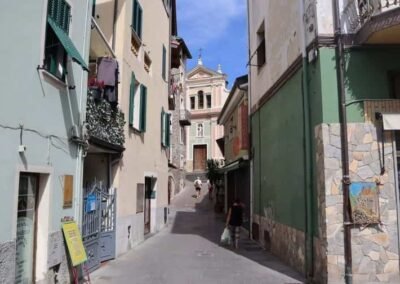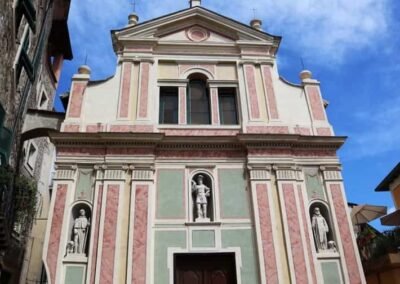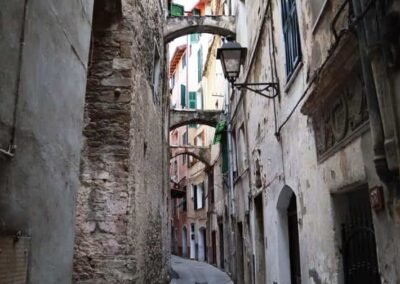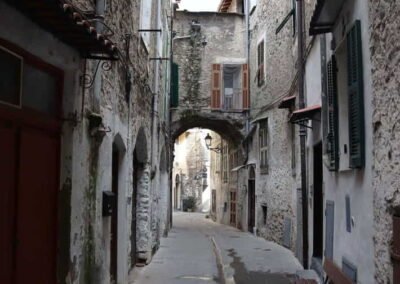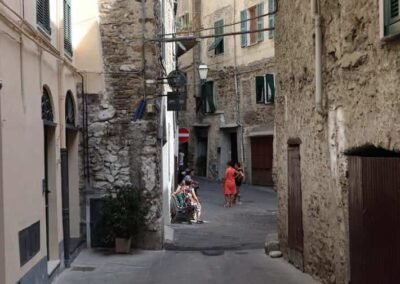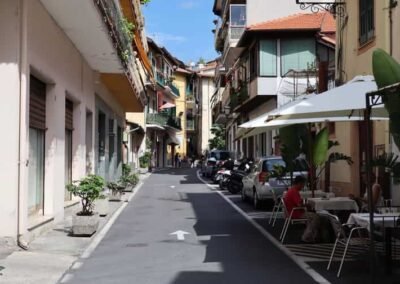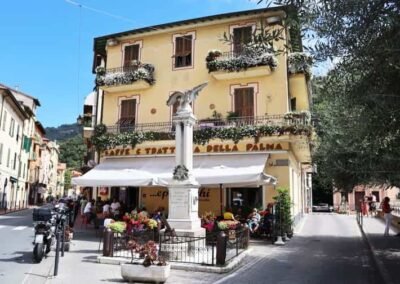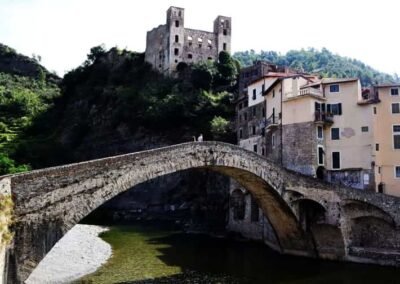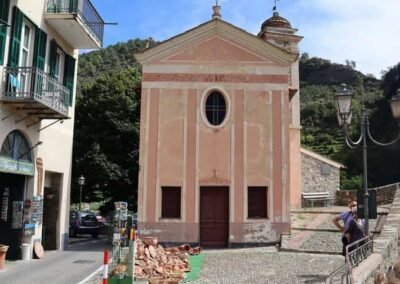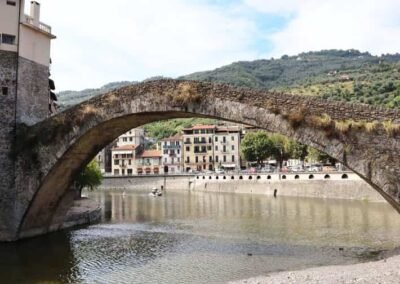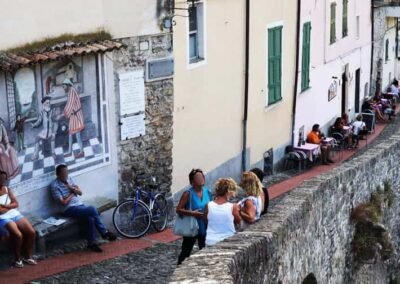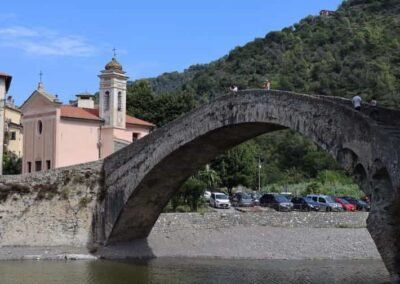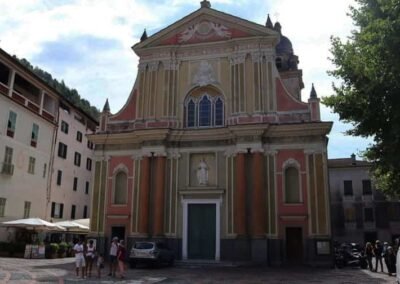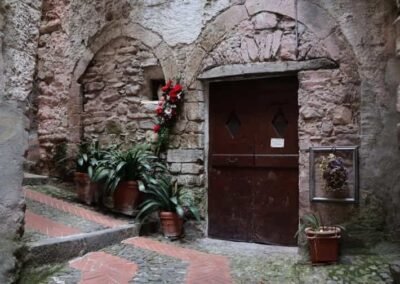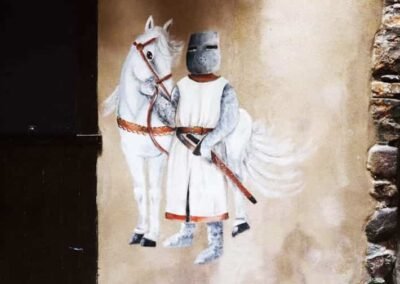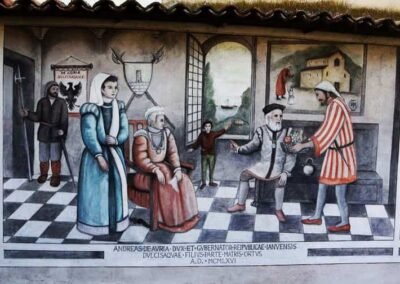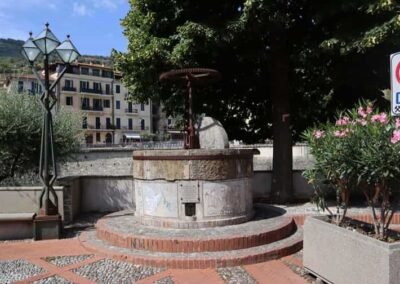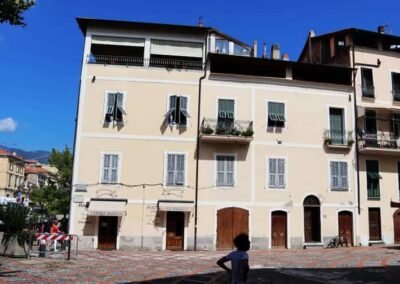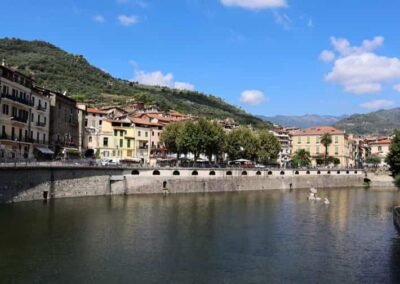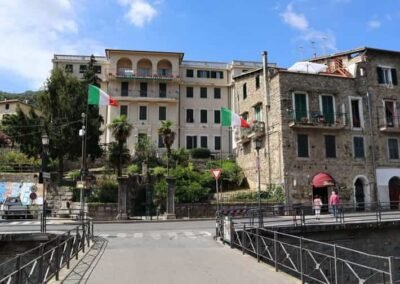HOME
THE REGIONS OF ITALY
PLACES IN ITALY
Italy in Photos
Via Roma, 18035 Dolceacqua IM, Italy (August 2020)
Dolceacqua
Dolceacqua, a picturesque village in the Ligurian hinterland of north-western Italy, is one of the most enchanting destinations along the Italian Riviera. Nestled in the verdant valley of the Nervia River, just a few kilometres from the Mediterranean coast and the French border, this medieval village combines natural beauty, history, and art in a way that feels timeless. Its name, which translates to “sweet water,” reflects the charm of its setting—clear river waters flowing beneath an elegant stone bridge, surrounded by olive groves and vineyards that climb the surrounding hills.
The heart of Dolceacqua lies in its perfectly preserved old town, known as Terra, a maze of narrow stone alleyways, vaulted passages, and steep stairways that seem to lead directly into history. Above the village rises the majestic Doria Castle, an ancient fortress that once guarded the valley and now offers breath-taking panoramic views over the roofs of the town and the rolling hills beyond. The castle, built in the thirteenth century and expanded over time, stands as a proud symbol of Dolceacqua’s medieval past and the long rule of the Doria family, who shaped the destiny of this land for centuries.
Below the castle, the graceful arched bridge that spans the Nervia River is perhaps the most iconic image of Dolceacqua. It was immortalized by the French impressionist Claude Monet during his visit in 1884, who described it as “a jewel of lightness.” Today, the bridge continues to unite the old town with the newer Borgo district, much as it unites history and modern life. Visitors crossing it are immediately captivated by the harmony between architecture and nature that defines this small yet extraordinary place.
Dolceacqua is also famous for its Rossese di Dolceacqua wine, a delicate and aromatic red that reflects the character of the land—sunny, rich, and enduring. Alongside wine, the village offers the traditional flavours of Ligurian cuisine: olive oil, fresh herbs, homemade pasta, and sweet pastries like pansarole. Festivals, art exhibitions, and music events bring life to its squares throughout the year, while its surrounding hills invite walks, bike rides, and peaceful moments in nature. Dolceacqua is not only a destination but an experience of authenticity and harmony, a perfect blend of history, culture, and the gentle rhythm of Italian village life.
Worth a Visit
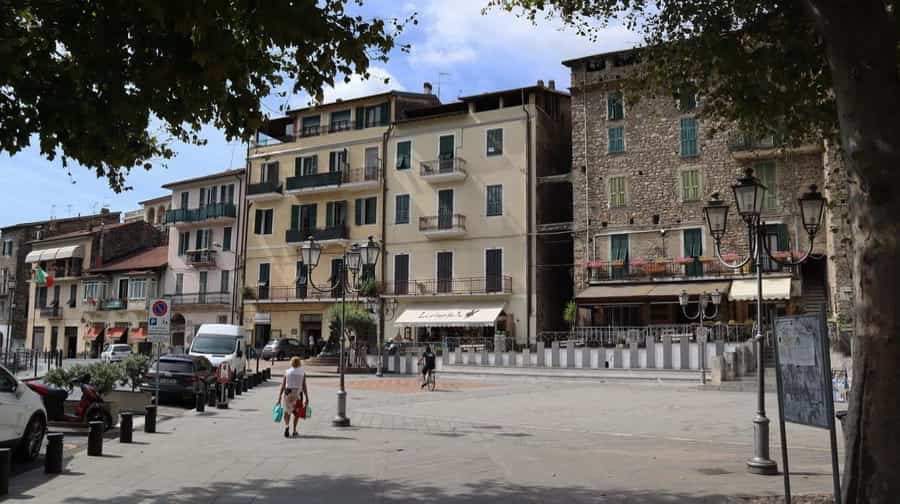
Located in the lower, more open part of Dolceacqua, contrasting with the densely built medieval “Tera” above, Piazza Giuseppe Garibaldi acts as the village’s lively gathering place, where residents and visitors naturally converge. It provides a welcoming pause before one ascends through the narrow stone alleys toward the historic castle above. Anchoring the square is a classic stone fountain, its modest elegance blending seamlessly with the pastel-hued walls of nearby buildings. The setting exudes the gentle rhythm of daily Ligurian life, framed by quaint cafés and local businesses cradled beneath colonnades, and served by a few restaurants offering laid-back charm
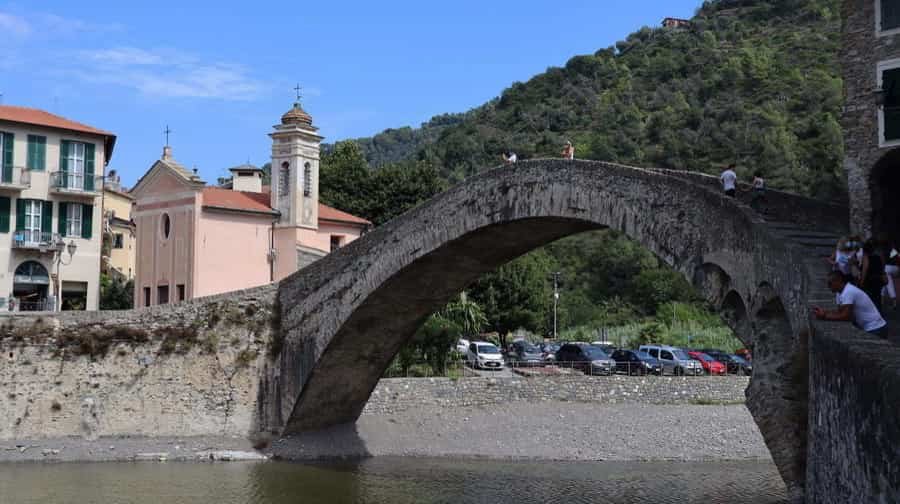
The Ponte Vecchio in Dolceacqua, an elegant medieval bridge spanning the Nervia River, is far more than a historic crossing; it’s a symbol of Ligurian beauty, artistic inspiration, and timeless connection. Built in the 15th century atop earlier foundations, the Ponte Vecchio links the village’s two distinct quarters: Terra, the original medieval settlement, and Borgo, the newer district that expanded beyond the river in later centuries. Its single arch, gracefully spanning approximately 33 meters, balances visual harmony with structural strength, embodying both functional necessity and architectural poetry. What gives the bridge its enduring fame is its magical blend of craftsmanship, setting, and cultural resonance. In 1884, the legendary Impressionist painter Claude Monet visited Dolceacqua and declared the bridge “a jewel of lightness.” He immortalized it in several paintings, most notably Bridge at Dolceacqua, capturing its luminous elegance alongside the silhouetted ruins of the Castle of the Doria in the background.
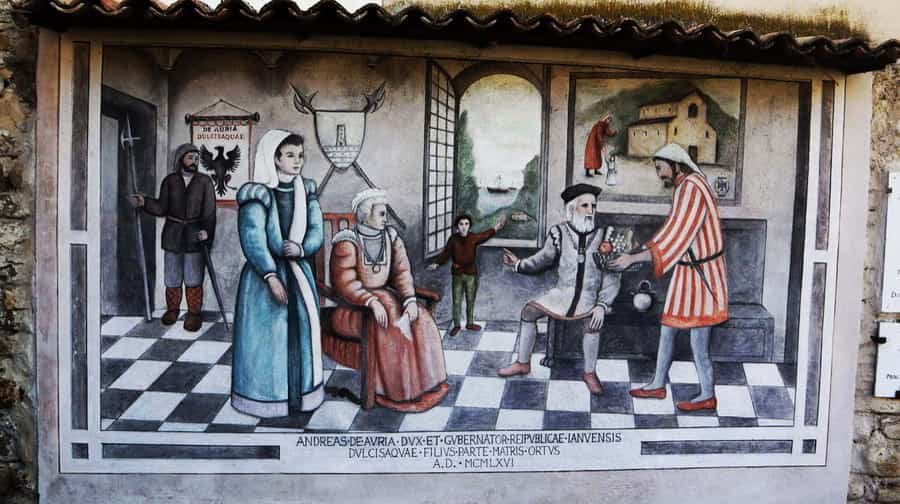
Situated just behind Dolceacqua’s medieval center, Via Monsignor Giuseppe Laura traces a discreet yet meaningful path parallel to the Nervia River, combining everyday life with subtle charm. This street is a local microcosm, hosting familiar neighbourhood touches, from a cosy Crep’Monet cafe-bar offering crepes and spritz with views overlooking the village, to small shops and airy walkways that echo Dolceacqua’s relaxed pace. A particularly distinctive feature along the street is the Fontana del Rossese. Though it doesn’t dispense wine, this imaginative fountain presents water with a reddish hue, a playful nod to Dolceacqua’s celebrated Rossese wine. It stands near the symbolic Gombo monument, together representing the area’s agricultural heritage, especially its wine and olive oil traditions.
Photo Gallery of Walk 1 – Via Roma to Piazza Giuseppe Garibaldi
Approximately 0.73 km – 0.45 miles
The walk starts in Via Roma – Piazza Giuseppe Garibaldi
Photo Gallery of Walk 2 – Via Barberis Colomba to Via Giardini
Approximately 0.92 km – 0.57 miles
The walk starts in Via Barberis Colomba – Via Dante Alighieri – Via S. Filippo – Ponte Vecchio di Dolceacqua, Via S. Filippo – Via Monsignor Giuseppe Laura – Chiesa Parrocchiale di Sant’Antonio Abate, Via Tibaudo – Centro Storico – Via Monsignor Giuseppe Laura – Ponte Giardini
COPYRIGHT © 2018-2025 ITALY IN PHOTOS - ALL RIGHTS RESERVED
